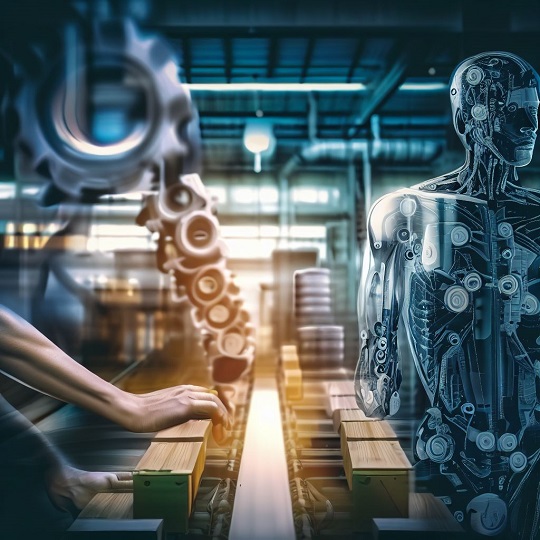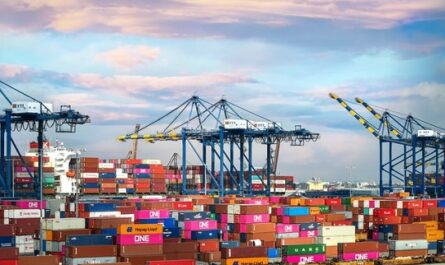In today’s fast-paced business world, the supply chain is the backbone of any successful enterprise. It’s a complex network of processes and activities that ensures products move seamlessly from manufacturers to consumers.
However, as technology continues to evolve, companies are faced with a critical decision: whether to invest in automation or rely on human power in their supply chain operations.
This dilemma raises important questions about efficiency, cost reduction, and the ethical implications of job displacement.
In this blog post, we will explore the challenges and opportunities of choosing between adding human power or installing automation in the supply chain, emphasizing the importance of making informed and responsible decisions.
Before we go further into this topic, don’t forget to follow my LinkedIn account. You’ll get more helpful insights on supply chain management there.
Table of Contents
The Automation Advantage
Automation has long been touted as a game-changer in supply chain management. The advantages are undeniable:
- Enhanced Efficiency: Automated systems, such as robots and conveyor belts, can work around the clock without fatigue or errors. This results in faster and more accurate order processing, reducing lead times and improving overall efficiency.
- Cost Reduction: Automation can significantly reduce labor costs in the long run. While initial investments might be substantial, the continuous operation of machines requires less maintenance and doesn’t demand salaries, benefits, or overtime pay.
- Reduced Human Error: One of the most common causes of supply chain disruptions is human error. Automation minimizes this risk, leading to fewer costly mistakes, returns, and damaged goods.
- Adaptability: Automated systems can quickly adapt to changes in demand, allowing for greater flexibility in responding to market fluctuations and unforeseen disruptions, such as pandemics or natural disasters.
- Data-Driven Decision-Making: Automation generates vast amounts of data that can be analyzed for insights. This data-driven approach enables companies to make more informed decisions and optimize their supply chain operations continually.
The Human Touch
Despite the undeniable benefits of automation, it’s crucial not to overlook the importance of human involvement in the supply chain. Here’s why human power remains indispensable:
- Complex Decision-Making: Humans possess critical thinking and problem-solving abilities that machines currently lack. They can assess situations, adapt to unique challenges, and make nuanced decisions.
- Creativity and Innovation: Human creativity is the driving force behind process improvements and innovative solutions in the supply chain. Humans can identify new opportunities and strategies that machines cannot.
- Customer Engagement: In many supply chain roles, particularly in customer-facing positions, the human touch is irreplaceable. Personal interactions and relationship-building are essential for customer satisfaction.
- Maintenance and Oversight: Automated systems still require human oversight, maintenance, and troubleshooting. Skilled technicians and operators are essential to ensuring that automation functions optimally.
- Ethical Considerations: Job displacement is a genuine concern when it comes to automation. Maintaining human employment is not just an economic necessity but also an ethical obligation.
The Ethical Dilemma
One of the most significant challenges in deciding between automation and human power in the supply chain is the ethical dilemma it presents.

On one hand, automation promises cost savings and efficiency gains, but on the other hand, it can lead to job loss and economic disparities. Here are some key ethical considerations:
- Job Displacement: As automation becomes more prevalent, there is a risk of displacing a significant portion of the workforce. This can lead to unemployment and increased income inequality, raising questions about social responsibility.
- Reskilling and Education: To address the impact of automation on employment, companies and governments must invest in reskilling and education programs to prepare the workforce for new roles and technologies.
- Ethical Automation: Ethical automation involves implementing technology in a way that minimizes job displacement. Companies should prioritize a “people-first” approach, ensuring that workers are not left behind in the automation transition.
- Corporate Social Responsibility: Companies should consider their social responsibility in the communities where they operate. This may involve creating new job opportunities, supporting local economies, or investing in social initiatives.
- Regulation and Policy: Governments play a vital role in shaping the ethical landscape of automation. Regulations and policies can encourage responsible automation practices and protect workers’ rights.
You might also like:
- The Complete Guide to Creating Useful Item Codes for Efficient Material Management in ERP Systems
- Safeguarding Your Inventory: Detecting and Preventing Manipulation
- Why Wasting Employee Skills Is a Costly Missed Opportunity
Making Informed Decisions
The decision to choose between adding human power or installing automation in the supply chain is not one-size-fits-all.
Each company’s circumstances and objectives are unique, and the choice should align with its specific needs and values. Here are steps to help make informed decisions:
- Assess Current Operations: Start by conducting a thorough assessment of your current supply chain operations. Identify pain points, inefficiencies, and areas where automation could bring improvements.
- Cost-Benefit Analysis: Conduct a cost-benefit analysis to determine the financial implications of automation. Consider initial investment costs, ongoing maintenance expenses, and potential labor savings.
- Evaluate Ethical Impact: Carefully weigh the ethical implications of your decision. Consider how automation may impact your workforce and the broader community. Explore options for responsible automation.
- Consult Stakeholders: Involve employees, stakeholders, and experts in the decision-making process. Their insights can provide valuable perspectives and uncover potential blind spots.
- Pilot Projects: Consider starting with small-scale automation projects to assess their effectiveness and impact. This allows you to make gradual transitions and minimize disruption.
- Continuous Improvement: Regardless of your choice, prioritize continuous improvement in your supply chain. Technology evolves rapidly, so staying adaptable and responsive is key.
Conclusion
The choice between adding human power or installing automation in the supply chain is a multifaceted decision that requires careful consideration.
While automation offers undeniable advantages in terms of efficiency and cost reduction, the ethical implications of job displacement cannot be ignored.
Responsible decision-making involves assessing current operations, conducting cost-benefit analyses, and considering the ethical impact of automation.
By striking a balance between human expertise and automation, companies can navigate the supply chain landscape while fostering innovation, supporting their workforce, and upholding their social responsibilities.
I hope you find it helpful!
Please share this article with your colleagues so they can also benefit. For more insights on supply chain management, follow my LinkedIn account. You’re free to use all articles on this blog for any purpose, even for commercial use, without needing to give credit.
 by
by 
